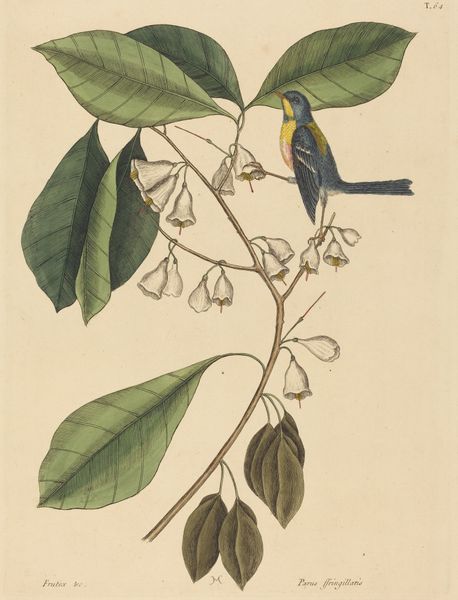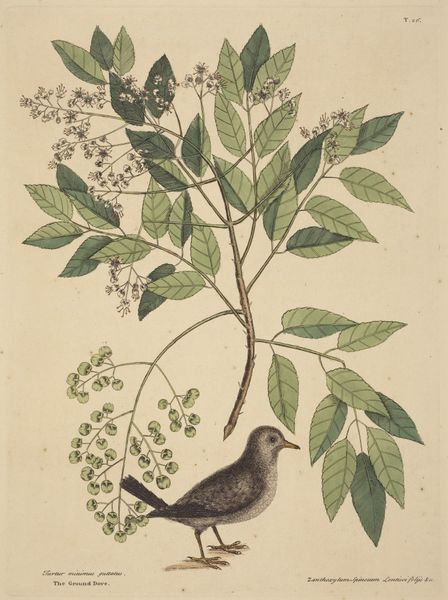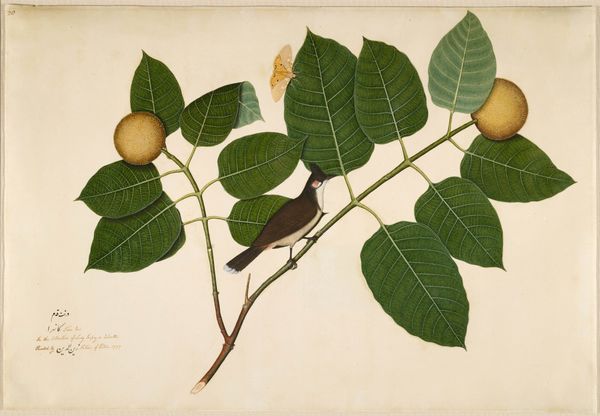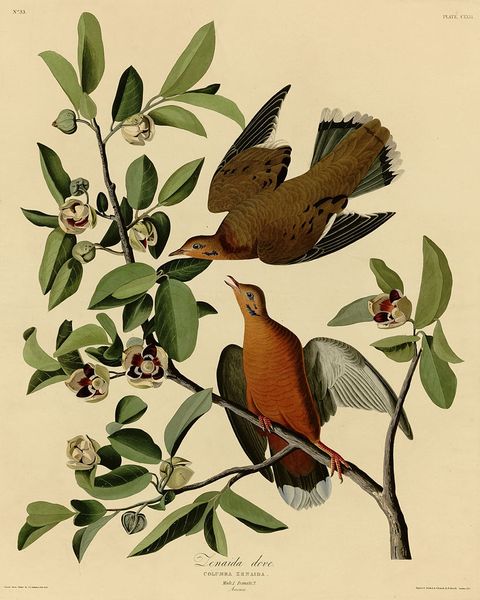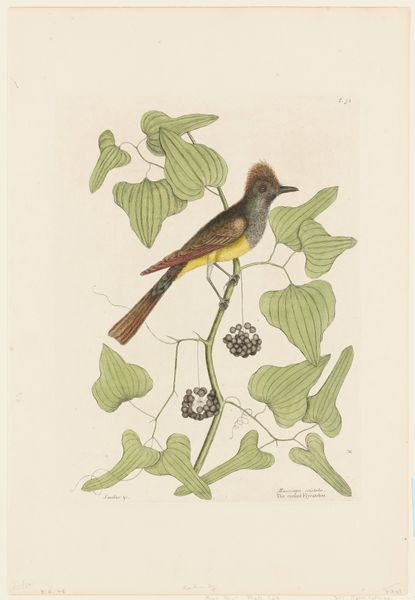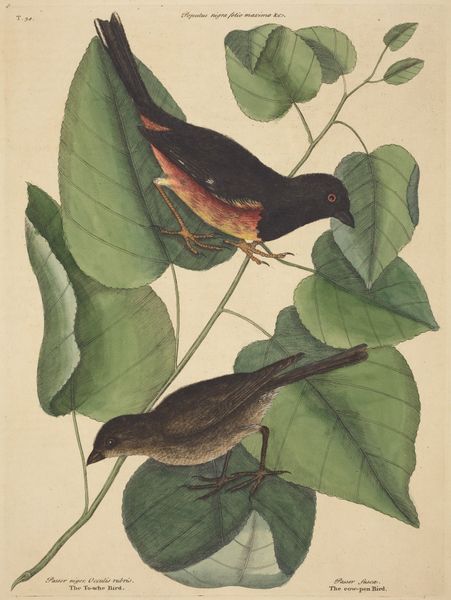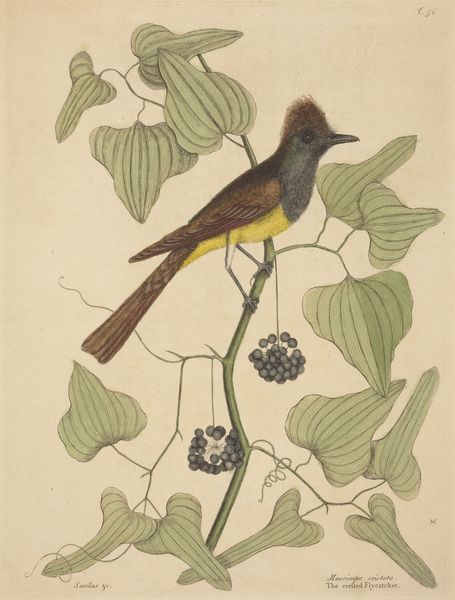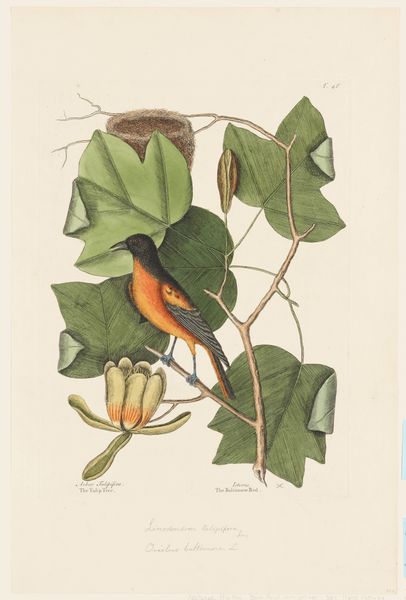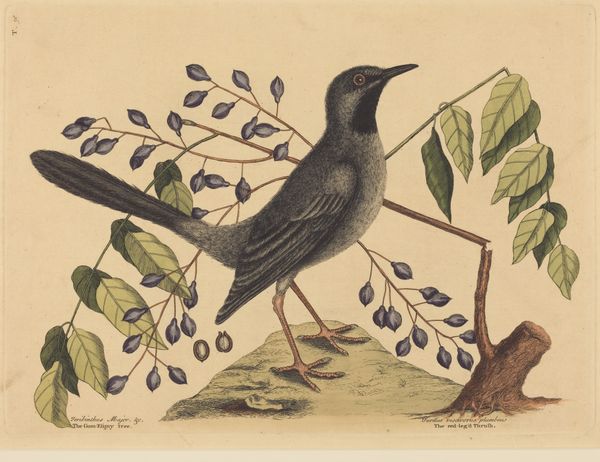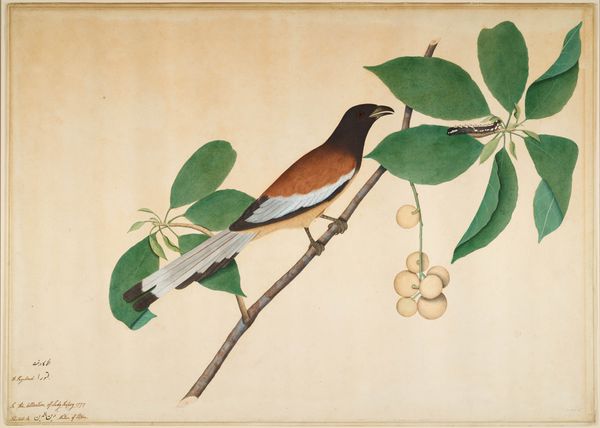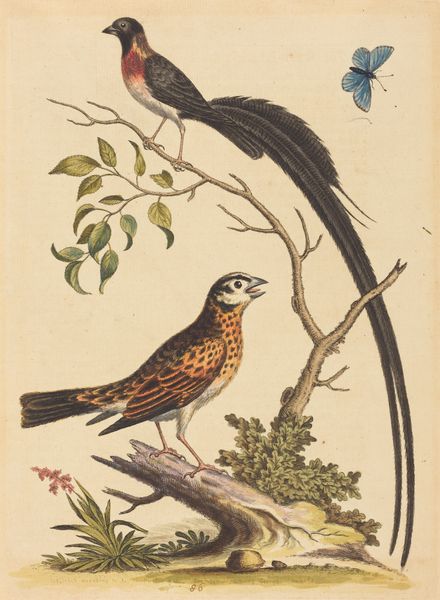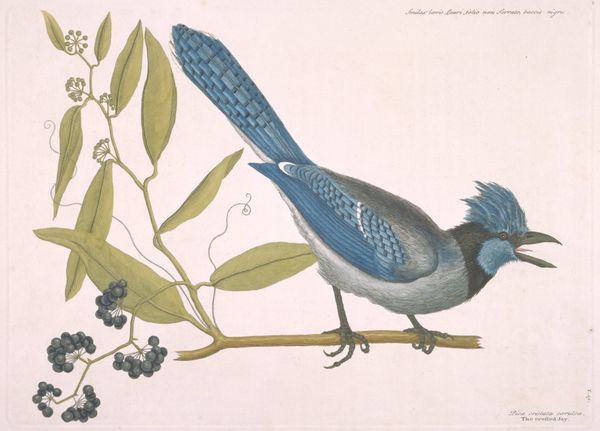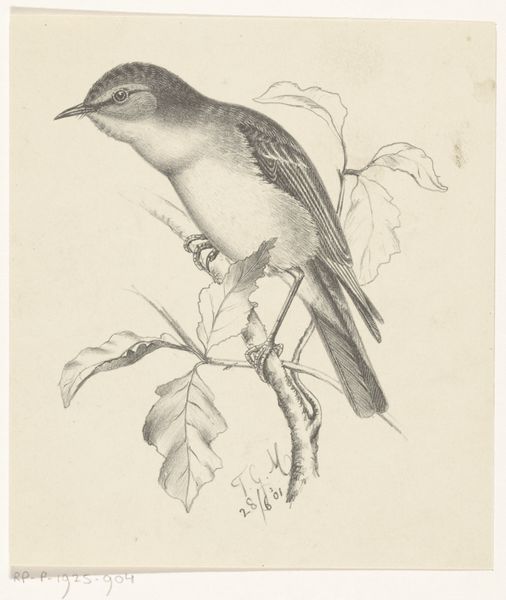
print, watercolor
# print
#
landscape
#
watercolor
#
watercolour illustration
#
naturalism
#
botanical art
#
watercolor
Dimensions: plate: 35.4 x 26.4 cm (13 15/16 x 10 3/8 in.) sheet: 51.1 x 36.7 cm (20 1/8 x 14 7/16 in.)
Copyright: National Gallery of Art: CC0 1.0
Editor: Here we have Mark Catesby's "The Little Brown Flycatcher," a watercolor and print made sometime between 1731 and 1743. It's delicate, and the details are quite precise. I’m curious about how Catesby created this, considering the period it was made. How do you interpret this work? Curator: Looking at this, I immediately consider the context of its production. The paper, the pigments, the printing process – all were commodities embedded in colonial trade networks. These weren’t simply "natural" depictions but meticulously crafted artifacts. The very act of capturing these images was intertwined with economic and social structures of the time. Think about the labor involved in producing the paper, extracting the pigments, even the transportation of materials. What do you notice about the level of detail given to the plants versus the birds? Editor: That's fascinating! I see what you mean. The leaves do seem almost diagrammatic, meticulously rendered. While the birds have detail too, the plant seems emphasized. Was that a common practice? Curator: Precisely! Consider the demand for botanical knowledge in Europe at that time. There was a burgeoning market for information about New World resources. Catesby was, in a sense, producing a commodity: knowledge. The watercolor likely served as the master image, then printed to make it accessible and marketable to a wider audience, expanding the reach and economic viability of his project. The social impact and use are so crucial. How does that material understanding affect your initial response to the piece? Editor: It completely changes it. It’s no longer just a pretty picture; it’s a product of a complex system. Knowing how this was made and distributed makes me question what other factors were at play during the production process. Curator: Exactly. By focusing on the materials and means of production, we start to unpack the layers of meaning embedded within. Editor: Thanks. I will never see such illustrations the same way again. It is definitely an enriching experience when you focus on the means of art production.
Comments
No comments
Be the first to comment and join the conversation on the ultimate creative platform.
